A Southern-Style Seder With Chef Laurence Faber
Laurence Faber and Emily Williams set the table for Knoxville’s Jewish community.
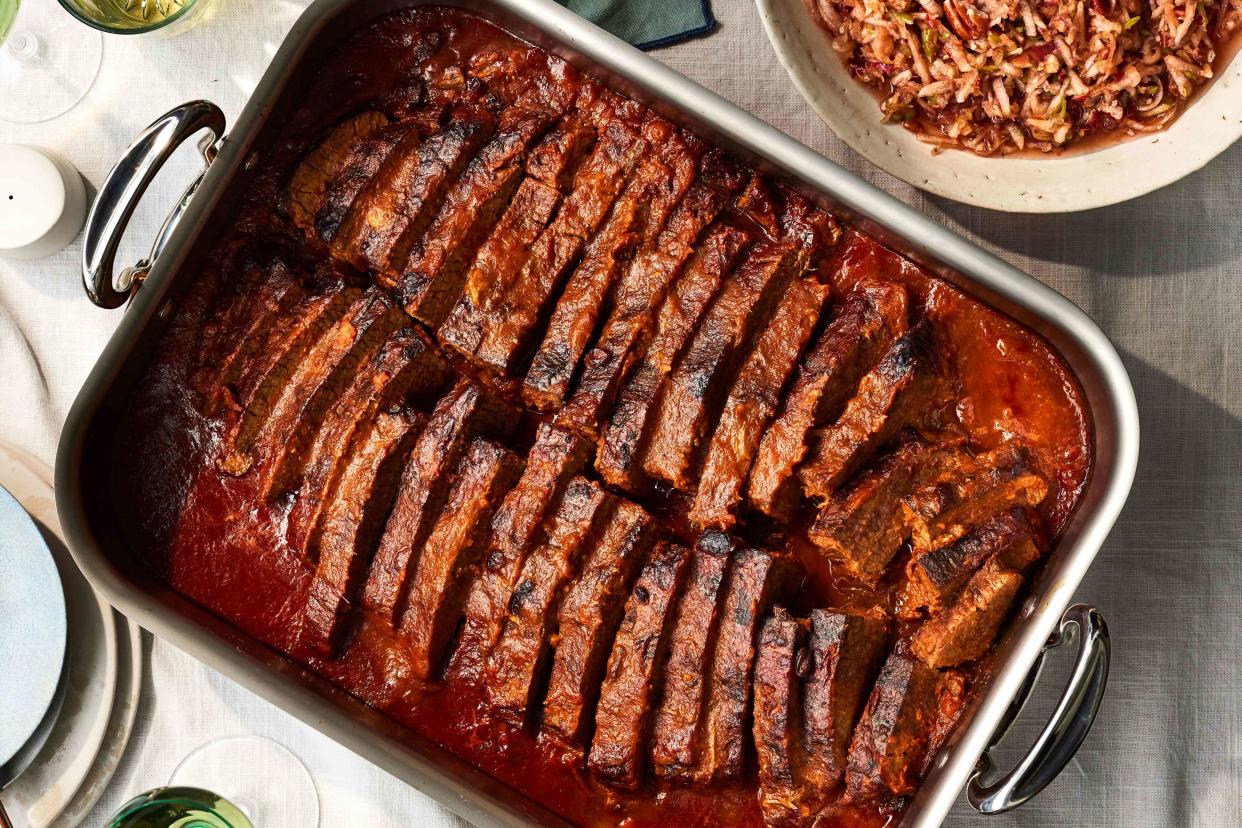
Victor Protasio, Food Stylist: Chelsea Zimmer, Prop Stylist: Christine Keely
"I was obsessed with food as a kid but grew up thinking most Jewish dishes were gross,” says Laurence Faber, chef at Knoxville’s Potchke deli, which he co-owns with his wife, Emily Williams. Back then, he was more interested in things like hummus and falafel than the traditional Ashkenazi recipes like strudel, vareniki (dumplings), eggplant salad, and matzo ball soup that were handed down by his great-grandmother, who came to America from the border of Moldova and Ukraine in 1921. “She passed away when I was a couple years old, so I never got to actually taste her cooking,” Faber says. Nevertheless, the dishes that she made were cherished by his family and ultimately guided him on his culinary journey.
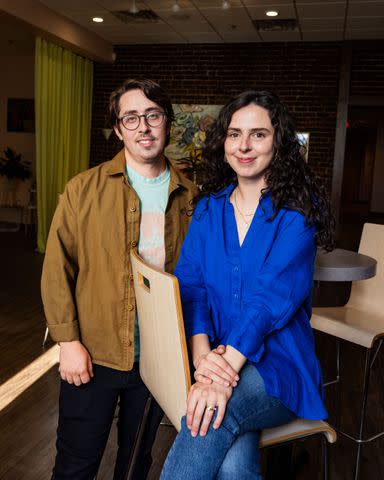
ROBBIE CAPONETTO
Husband-and-wife owners of Potchke deli, Laurence Faber and Emily WilliamsA Memphis native, Faber grew up immersed in the Jewish community, but when it came to customs like keeping kosher, his family wasn’t strict—except for on holidays. “I’ve always loved Passover because it is the most food oriented,” Faber says. The eight-day celebration starts with cleansing the home of all hametz (foods or drinks containing leavening agents) and bringing in the matzo, followed by the Seder, a special meal typically held on the first and second nights. “My family would always go to my uncle Richard’s house for the Seder, set up a giant table in the living room, and gather around to read the Haggadah [which includes the retelling of the Jewish people’s exodus from Egypt],” he says. “The meal would end with all the kids running around the house searching for the afikomen (hidden piece of matzo).”
Faber found his place in the kitchen at a young age and was self-taught from hours spent watching the Food Network and poring over cookbooks. “I started cooking more when my mom went to night school to finish college,” he recalls. “I’d print out a recipe, she’d buy the ingredients, and my brother and I would make a meal.” After moving to Knoxville, Tennessee, for college, Faber lost touch with some Jewish traditions. A string of restaurant jobs meant he had to work weekend nights and often couldn’t join in celebrations. Eventually, he landed a position as a pastry chef at Blackberry Farm, where he honed his skills, explored new ingredients, and met influential Jewish guest chefs like Alon Shaya, Zachary Engel, and Michael Solomonov. “I became super interested in cooking Jewish food, because it was my heritage, and started teaching myself more about other areas of the cuisine,” he says.
In 2022, he and Williams opened Potchke (he says the Yiddish name loosely translates “to mess around” or “to make a fuss” in the kitchen), and they look forward to Passover each year. They even celebrated Williams’ first Seder with customers who have become friends. “It’s been rewarding to see people use our restaurant as a Jewish community space,” says Williams. Here, Faber shares an approachable Seder menu that combines old and new ingredients and techniques, with brisket as the star of the show. “Every Jewish family has a secret recipe for that,” he says. “Each Passover, there’s going to be a brisket, but it’s always a little bit different.”
Faber's Seder Menu
Leafy Green Salad with Sunflower Seed Dressing
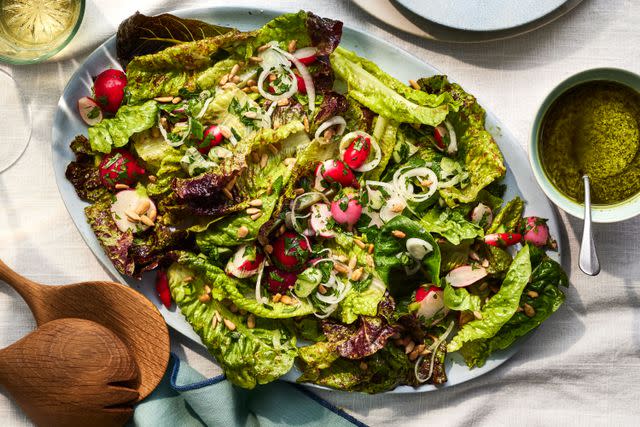
Victor Protasio, Food Stylist: Chelsea Zimmer, Prop Stylist: Christine Keely
This simple green salad is inspired by the markets and abundance of herbs and sunflowers growing wildly in Ukraine and Moldova that Faber and Williams' experienced first hand. Using a variety of seasonal spring veggies and an aromatic dressing, the light salad is the perfect pairing to any meal, especially Faber's brisket.
Charoset
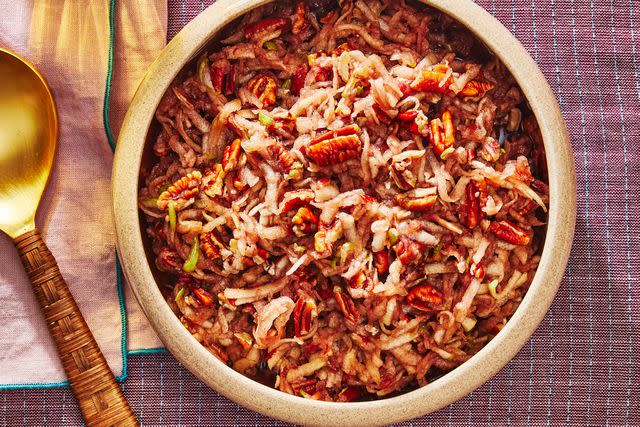
Caitlin Bensel; Food Stylist: Torie Cox
This dish is traditionally found at any Passover Seder. "It is required for every Passover seder and represents the mortar used by the Jewish slaves in Egypt for building the pyramids," explains Faber. While you'll find Charoset made a variety of ways, Faber's is an Appalachian-inspired version of the traditional dish.
Potato Kugel with Schmaltzy Onions
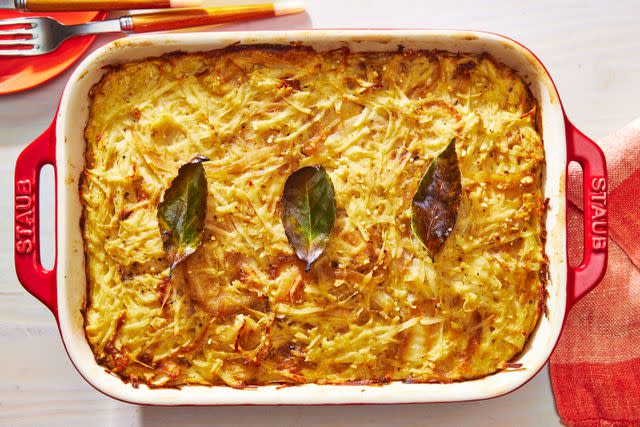
Caitlin Bensel; Food Stylist: Torie Cox
"Kugel is essentially the word for Jewish casserole and you'll see it on every Ashkenazi family's table," says Faber. "And it can be sweet or savory." To bring back old-world flavor, the chef prefers rendered fat instead of olive oil. "My great-grandmother would make the schmaltz from scratch with chicken skin, but through modernizing things, you just don’t see that method as much anymore."
Sweet-and-Sour Braised Beef Brisket
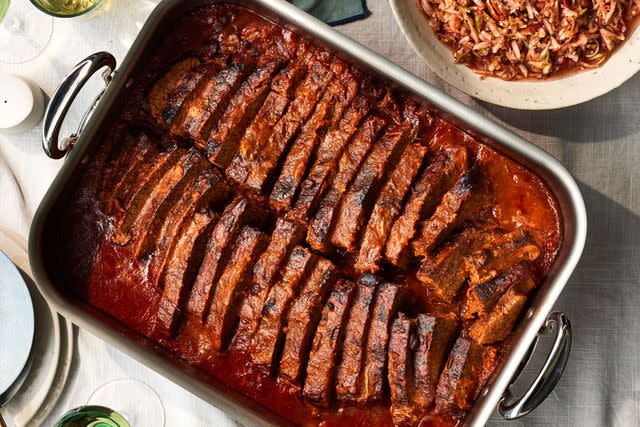
Victor Protasio, Food Stylist: Chelsea Zimmer, Prop Stylist: Christine Keely
Instead of modern shortcuts like ketchup, onion soup packets, or wine, for his brisket (or Essig Fleisch in Yiddish) Faber only uses ingredients that would have been found in his great-grandmother's kitchen. "How you cook it, slice it, and put it back together is a really easy way to serve it for families rather than bringing the whole thing out and having a mess," he says. "It’s made much more simple so you do a lot of the cooking ahead of time."
For more Southern Living news, make sure to sign up for our newsletter!
Read the original article on Southern Living.






